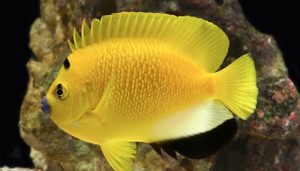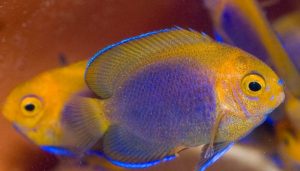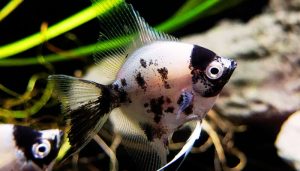How Many Rabbit Snails Per Gallon Tank? Are you considering adding rabbit snails to your aquarium but are unsure? Do you need help figuring out how many you can have per gallon? With their unique appearance and peaceful nature, rabbit snails can make a great addition to your tank.
However, overcrowding can lead to stress and health issues for your slow-moving snails.
This article will break down the recommended guidelines for how many rabbit snails you can safely keep per gallon of water in your aquarium.
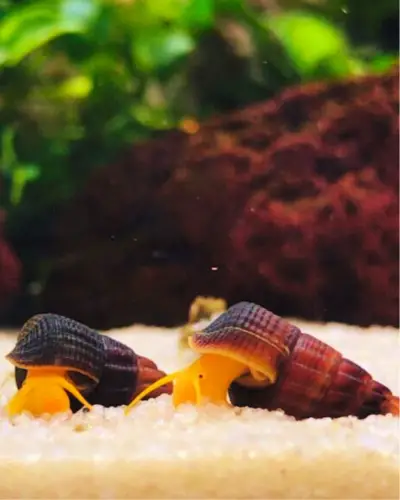
By following these two easy steps, you can ensure the success and well-being of your rabbit snails in their new home. Whether you’re a beginner or an experienced aquarist, knowing the appropriate stocking levels for your tank can create a thriving aquatic environment for your snails.
Keep reading to learn how to calculate the ideal number of rabbit snails per gallon and set up a healthy and harmonious tank for these fascinating creatures.
Table of Contents
ToggleHow Many Rabbit Snails Per Gallon?
While rabbit snails are relatively small and peaceful creatures, they still require adequate space to thrive and maintain a healthy aquarium environment.
A 10-gallon tank is the recommended minimum size for a single rabbit snail or pair. This allows enough room for them to graze, explore, and exhibit their natural behaviors without feeling cramped.
However, if space is minimal, a 5-gallon tank can suffice for one rabbit snail, but be aware that meticulous maintenance is crucial to prevent waste buildup and maintain optimal water quality.
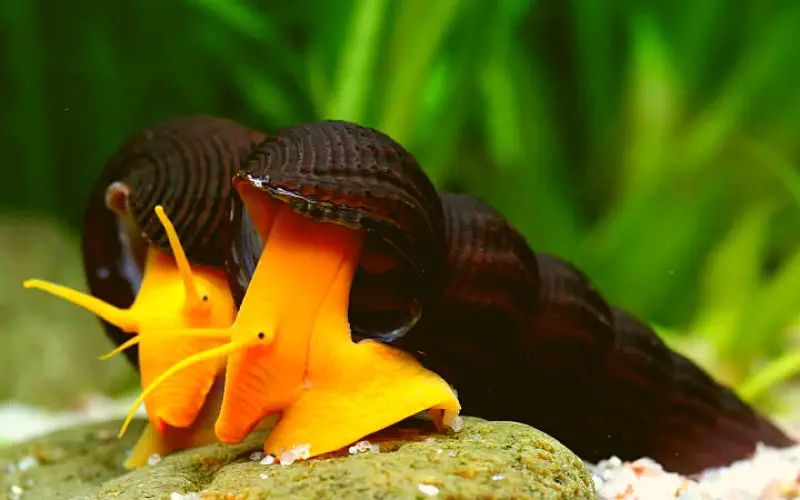
Remember, rabbit snails are efficient algae eaters but also produce a significant amount of waste. Overcrowding can quickly lead to ammonia spikes and poor water conditions, jeopardizing the health of your snails and other tank inhabitants.
Here are some additional factors to consider when determining the appropriate tank size for your rabbit snails:
- Number of snails: As a general rule, add 5 gallons per additional snail to prevent overcrowding.
- Filtration: A robust filter is essential to handle the bioload rabbit snails produce.
- Tankmates: If you plan to keep other aquatic animals with your snails, you’ll need a larger tank to accommodate everyone comfortably.
By providing ample space and proper care, you can ensure your rabbit snails live a long and happy life, adding their unique charm to your aquarium ecosystem.
Rabbit Snail Care Requirements
Rabbit snails are fascinating creatures requiring specific care to thrive in an aquarium setting. These bottom feeders will appreciate a substrate of sand or gravel in your freshwater tank and plenty of live aquarium plants to nibble on.
It’s important to note that rabbit snails need calcium to maintain their cone-shaped shell health, so providing mineral supplements or offering fish flakes can help meet this need.
Feeding them a varied diet of blanched vegetables like spinach, zucchini, and leafy greens will keep them healthy and happy.
When conditions are right, rabbit snails can reproduce, with the female laying a white egg sack that eventually hatches into a baby rabbit snail. If you have other tank inhabitants, like fish, freshwater shrimp, or crayfish, be wary that they may injure or prey on these curious little organisms.
For those who adore mystery snails, assassin snails, trumpets snails, or nerite snails, adding rabbit snails to your community-cycled tank can provide a unique and colorful addition.
With varieties like the yellow rabbit, orange poso, or orange rabbit snails, their vibrant colors will stand out against the green of your plants.
Keeping their environment clean with the help of a canister filter will keep Ammonia and Nitrite levels at 0 ppm, as rabbit snails are sensitive to these chemicals. Malaysian trumpet and tylomelania snails also make great tank mates for rabbit snails, as they share similar care requirements and peaceful temperaments.
2 EASY Steps for Success! Reproduction/Rabbit Snail Breeding
If you’re interested in breeding these delightful snails, follow these two simple steps to increase your chances of success:
Step 1: Provide the Ideal Environment
- Spacious Tank: A 20-gallon tank or larger is recommended for a breeding group of rabbit snails. This allows ample space for mating, laying eggs, and raising young without overcrowding.
- Stable Water Parameters: Maintain pristine water conditions with a consistent temperature between 72-82°F (22-28°C), a pH level around 7.5-8.5, and moderate water hardness. Regular water changes are crucial to prevent ammonia and nitrite buildup.
- Healthy Diet: Offer a varied diet rich in calcium to promote healthy shell growth and reproductive success. Include calcium-rich foods like blanched vegetables, algae wafers, and cuttlebone.
- Hiding Spots: Provide plenty of hiding places, such as caves, driftwood, and dense plants, to create a sense of security for breeding snails.
Step 2: Patience and Observation
- Gender Identification: Rabbit snails are not hermaphrodites, meaning there are distinct males and females. However, visually distinguishing them can be challenging. Observing mating behavior is the most reliable way to identify genders.
- Mating & Egg Laying: If conditions are optimal, mating will occur naturally. Females lay eggs in hard, calcareous capsules attached to surfaces like plants or tank walls.
- Hatchling Care: Baby rabbit snails are independent from birth and can be raised in the same tank as adults. Ensure they have access to appropriate food sources like algae and biofilm.
You’ll soon enjoy the rewarding experience of raising baby rabbit snails by providing a comfortable and healthy environment and exercising patience!
Ideal Tankmates for Rabbit Snails: Fostering a Peaceful Community
With their peaceful nature and algae-eating prowess, Rabbit snails make fantastic additions to many community tanks. However, choosing suitable tank mates is crucial for ensuring harmony and the well-being of all inhabitants.
Here are some excellent options to consider:
- Small, peaceful fish: Species like neon tetras, ember tetras, or celestial pearl danios are ideal. They occupy different levels of the tank and won’t bother your snails.
- Shrimp: Peaceful shrimp species, such as cherry shrimp or Amano shrimp, make excellent companions, as they share similar water parameter preferences and help with algae control.
- Other Freshwater snails: Mystery snails, Nerite snails, Ramshorn Snails, and Malaysian trumpet snails can co-exist peacefully with rabbit snails, contributing to a diverse and efficient clean-up crew.
- Bottom dwellers: Corydoras catfish and Otocinclus catfish are peaceful bottom feeders that won’t harm your snails and help keep the substrate clean.
Tank Mates to Avoid:
- Aggressive fish: Cichlids, Betta fish, goldfish, and giant catfish are known to be assertive and may prey on or harass your snails.
- Snails that eat other pond snails: Avoid Assassin snails, as they are known to prey on other snail species, including rabbit snails.
Additional Tips:
- Provide ample hiding spaces: Rocks, caves, and plants such as java fern offer shelter and security for your snails, reducing stress and promoting their well-being.
- Maintain optimal water conditions: Regularly monitor water parameters to ensure they are within the ideal range for your snails and their tank mates.
- Offer a varied diet: Supplement algae growth with sinking algae wafers or blanched vegetables to ensure your rabbit snails receive adequate nutrition.
By carefully selecting compatible tank mates and creating a suitable environment, you can cultivate a thriving aquatic community where your rabbit snails and their companions live harmoniously.
Commonly Asked Questions about How Many Rabbit Snails Per Gallon (FAQs)
How many snails can you have per gallon?
The ideal number of snails per gallon depends on the species, but a good rule of thumb is 1 snail per 5 gallons of water.
Will rabbit snails overpopulate?
No, rabbit snails are unlikely to overpopulate. They breed very slowly, typically laying just 1-3 eggs at a time.
Do rabbit snails clean tanks?
Rabbit snails help with tank cleaning by eating algae and biofilm on surfaces. They are not a complete substitute for regular maintenance but can contribute to a cleaner aquarium.
How fast do rabbit snails reproduce?
How fast do rabbit snails breed? Rabbit snails reproduce much slower than other aquarium snails. They typically lay only 1-2 eggs every 4-6 weeks and need both a male and female present.
How long do rabbit snails sleep?
Rabbit snails can sleep for several days at a time! During these long sleeping periods, they often burrow in the gravel or rest with extended feet. If you’re worried your snail is deceased, check for a sealed shell – that’s a sign they’re truly gone.
Do rabbit snails self-produce?
No, elephant snails do not self-reproduce. They require a male and a female snail to mate and produce offspring.
What are rabbit snails good for?
Rabbit snails are excellent algae eaters, keeping tanks clean. Their peaceful nature makes them ideal for community aquariums with small fish and shrimp.
Conclusion
Creating a thriving environment for your aquatic companions is a rewarding experience, offering a window into a captivating underwater world. By understanding the specific needs of rabbit snails, including their ideal tank size and compatible tank mates, you can cultivate a balanced and harmonious ecosystem right in your home. Remember, responsible pet ownership hinges on thorough research and dedicated care. So, before welcoming these fascinating creatures into your life, ensure you’re well-prepared to meet their requirements. That includes knowing the answer to the crucial question: How many rabbit snails per gallon can your aquarium comfortably accommodate? With the proper knowledge and commitment, you’ll be well on your way to creating a thriving aquatic haven for your rabbit snails to flourish.
You might also like
- Orange Giant Sulawesi Rabbit Snails Care Guide (Must Read)
- Do Rabbit Snails Burrow: 5 Reasons Why You NEED Them!
- Freshwater Rabbit Snails Size 101: (Tank Size & Care Guide)
- How Do Rabbit Snails Reproduce: (Mind-Blowing Facts)
- Rabbit Snail Tank Size 101: Setting Up the Perfect Aquarium
- Rabbit Snails Water Parameters 101: (A Guide to Happy Snails)


